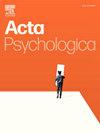通过数字故事增强英语写作能力:CALF 测量和多维参与的准实验评估
IF 2.1
4区 心理学
Q2 PSYCHOLOGY, EXPERIMENTAL
引用次数: 0
摘要
本混合方法研究旨在从复杂性、准确性、词汇多样性和流畅性(CALF)等方面,探讨传统和数字讲故事(DST)对英语作为外语(EFL)学习者写作成绩的影响。此外,本研究还揭示了学习者在完成 DST 任务时如何从行为、认知、情感和代理等维度参与其中。研究对象是 45 名中级水平的大学生,他们被分配到 DST 组和传统讲故事(TST)组。在为期四周的课程中,受试者通过网络平台或传统的纸笔形式构建自己的故事。采用准实验设计,进行组内和组间比较。通过一系列配对样本 t 检验,比较了各组的前测和后测(组内比较),并评估了 CALF 各项指标从前测到后测的改善情况。此外,还对两组在 CALF 各项指标上的测试后得分进行了 2 × 2 混合方法方差分析(组间比较)。测试结果表明,无论是传统模式还是数字模式的讲故事任务,都有效地提高了学生的整体写作水平。然而,DST 对句法复杂性、准确性和词汇多样性有显著影响,而写作流畅性则不受影响。此外,问卷调查和访谈数据结果显示,学生在完成 DST 任务时表现出多维度的参与(行为、认知、情感和代理),其中代理方面最为突出。讨论了将 DST 纳入 EFL 环境的教学意义。本文章由计算机程序翻译,如有差异,请以英文原文为准。
Empowering EFL writing through digital storytelling: A quasi-experimental assessment of CALF measures and multidimensional engagement
This mixed-methods study aims to investigate the impact of traditional and digital storytelling (DST) on English as a foreign language (EFL) learners' writing performance in terms of complexity, accuracy, lexical diversity, and fluency (CALF) measures. Moreover, the study sheds light on how learners were engaged along behavioral, cognitive, affective, and agentive dimensions when completing the DST task. The participants were 45 intermediate-level college students who were assigned to the DST and traditional storytelling (TST) groups. Under a four-week curriculum, the participants constructed their stories by using either an online platform or traditional pen-and-paper format. Adopting a quasi-experiment design, within-group and between-group comparisons were made. A series of paired samples t-tests were run to compare the pretest and post-test of each group (within-group comparison) and assessed any improvement from the pretest to the post-test across CALF measures. Also, a 2 × 2 mixed-methods analysis of variance (ANOVA) was run on the post-test scores of the two groups across CALF measures (between-group comparisons). The results of these tests unveiled that the storytelling task, in either traditional or digital mode, effectively enhanced students' overall writing performance. However, there was a significant impact of DST on syntactic complexity, accuracy, and lexical diversity, while writing fluency remained unaffected. Moreover, the results of the questionnaire and interview data revealed the students' multidimensional engagement (behavioral, cognitive, affective, and agentive) while performing the DST task, with the agentive aspect emerging as most prominent. Pedagogical implications of incorporating DST in EFL contexts were discussed.
求助全文
通过发布文献求助,成功后即可免费获取论文全文。
去求助
来源期刊

Acta Psychologica
PSYCHOLOGY, EXPERIMENTAL-
CiteScore
3.00
自引率
5.60%
发文量
274
审稿时长
36 weeks
期刊介绍:
Acta Psychologica publishes original articles and extended reviews on selected books in any area of experimental psychology. The focus of the Journal is on empirical studies and evaluative review articles that increase the theoretical understanding of human capabilities.
 求助内容:
求助内容: 应助结果提醒方式:
应助结果提醒方式:


